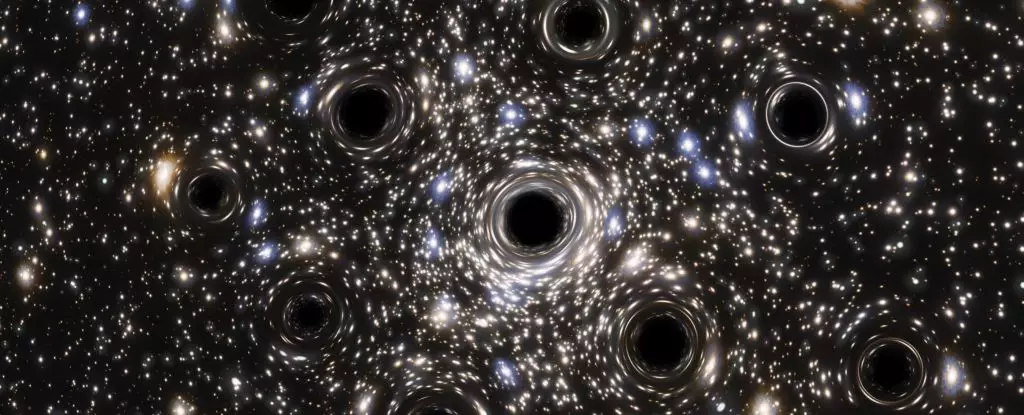The Milky Way galaxy’s complex gravitational ballet continues to captivate astronomers, especially as new discoveries challenge long-held beliefs about celestial bodies. The recent analysis of Omega Centauri, the largest globular star cluster located over 17,000 light-years away, has unveiled a startling revelation: it may be home to a collection of stellar-mass black holes, contrasting previous assumptions of a singular, massive black hole. This finding not only reshapes our understanding of black hole existence but also poses significant questions regarding the nature and formation of intermediate-mass black holes (IMBHs).
Omega Centauri is an exceptionally rich globular cluster, spanning approximately 150 light-years in diameter and housing around 10 million stars. It is believed to be the remnant core of a dwarf galaxy, dubbed the Gaia Sausage, which was absorbed into the Milky Way. The unique characteristics of such globular clusters lead scientists to consider them as miniature galaxies.
Dwarf galaxies are fascinating because instead of a supermassive black hole, often found at the center of full-sized galaxies, they could contain an IMBH—ranging between 100 and 1,000 times the mass of the Sun. This potential existence of IMBHs has intrigued researchers for years, as they could serve as missing links in understanding the black hole hierarchy, connecting small stellar-mass black holes to the supermassive varieties that dominate galactic centers.
Historically, the notion of a singular large black hole at the heart of Omega Centauri garnered traction. Past studies suggested a hidden mass of approximately 8,200 solar masses, fitting well within the debated IMBH spectrum. However, recent research led by astrophysicist Andrés Bañares Hernández has taken a bold step by integrating new data, particularly focusing on pulsars—rapidly rotating neutron stars that can emit highly detectable beams of radiation.
Utilizing the unique properties of pulsars, scientists were able to draw unconventional conclusions about the dynamics at play within Omega Centauri. Traditionally, it was perceived that stellar-mass black holes could not have a stable presence in such a dense environment; they would be expected to scatter away due to gravitational interactions with other stars. The latest analyses challenge this assumption, suggesting that a group of smaller, stellar-mass black holes might indeed occupy the cluster’s core.
The examination of star movements within the cluster is crucial for understanding the underlying mechanics of Omega Centauri. By incorporating pulsar acceleration data into their models, researchers could precisely map stellar positions and movements. The implications of a stellar swarm coexisting with potential IMBHs have opened avenues for inventive hypotheses regarding cosmic evolution.
It is crucial to note that while the current findings lean towards a collection of smaller black holes, the door remains ajar for the existence of an IMBH. The coexistence of stellar-mass black holes and an IMBH could shed light on the formation process of giant black holes and their pivotal roles in evolutionary cycles of galaxies.
The discoveries made within Omega Centauri resonate far beyond its cosmic perimeter; they speak to fundamental questions about black hole formation, population sizes, and evolutionary paths. Understanding the elusive nature of IMBHs could reshape astronomical models and encourage further exploration of star clusters.
The ongoing quest to pinpoint IMBHs mirrors humanity’s broader desire to comprehend the universe’s structure. If they indeed form from the merger of stellar-mass black holes, studying clusters like Omega Centauri might yield vital insights.
As the astronomical community focuses its gaze back towards Omega Centauri, the paradox of light versus darkness invigorates debate. The challenges posed today could evolve into answers for tomorrow, with researchers exchanging hypotheses, studying luminary pulsars, and diligently hunting for their hidden celestial counterparts. While Omega Centauri’s full story remains to be told, each revelation enhances our grasp of the sky’s enigmatic depths, promising a fascinating journey into the unknown.

